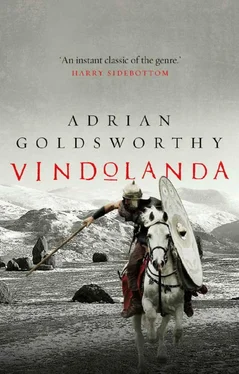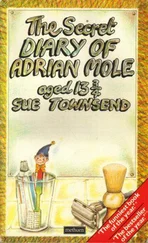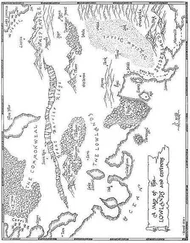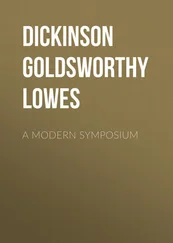Vindolanda is set in AD 98, the first year of Trajan’s reign, and at this time the province of Britannia was just over fifty years old. Although Julius Caesar had landed in Britain in 55 and 54 BC, no permanent Roman presence was maintained, and it was not until AD 43 that the Emperor Claudius sent an invasion force across the Channel. In AD 60 Boudicca’s rebellion devastated southern Britain, but after her defeat there is no trace of any serious resistance in the Lowlands. This is not true of northern Britain, which was garrisoned by substantial numbers of troops for the remaining three and a half centuries of Roman occupation.
In AD 98 few would have guessed that the Romans would stay for so long. Their presence in the north was more recent, for it was mainly in the seventies and eighties AD that this area was overrun. During this time Roman armies marched far into the north of what would become Scotland, while a naval squadron for the first time circumnavigated Britain, confirming that it was an island. An entire legion – one of the four then garrisoning the province and one of twenty-eight in existence – built a base at Inchtuthil in Perthshire, the biggest site in a network of garrisons on the edge of the Highlands. Around the same time, a system of observation towers along a military road was constructed along the Gask ridge.
All of this activity, which to a great extent is known only from the archaeological remains, makes clear the Romans’ intention to occupy this region more or less permanently, but in the late eighties AD priorities changed. The Emperor Domitian, faced with serious trouble on the Danube, withdrew Legio II Adiutrix from Britain and did not replace it. It is probable that substantial numbers of auxiliaries were withdrawn at the same time, so that the provincial garrison was cut by at least a quarter. Inchtuthil and many of the other bases were abandoned, and the same thing happened a little later to the remaining sites and the Gask ridge line. No Roman base was maintained north of the Forth–Clyde line, and soon the northernmost outpost was at Trimontium or Newstead.
Several forts were maintained or built close to what would one day become the line of Hadrian’s Wall. A couple of years after our story, a proper road running between Carlisle and Corbridge was constructed and more forts and smaller outposts added. Today the road is known by its medieval name, the Stanegate or ‘stone road’, and archaeologists continue to debate its composition and purpose. By about AD 106 Newstead was abandoned in another withdrawal. Our paltry literary sources make no mention of any of this, so it is left to us to guess from the archaeology just what was going on.
A novelist has more freedom, and once again I have done my best to reconstruct these years for our purposes in a way that never conflicts with any hard evidence. At the very least I hope that our story is something that could have happened. Something made the Romans station significant numbers of troops in this area at the end of the first century AD, and then made them increase these numbers and develop the deployment along the Stanegate just a few years later. All of the forts mentioned in the story existed and were occupied in AD 98. (Precise dating is rarely possibly through excavation so it may be that the fort at Magna or Carvoran dates to a year or two later, but it is not impossible that it was there in 98). Syracuse is an invention, but typical of the many small outposts set up by the Roman army as needed. I see it as a predecessor to the excavated sites at Haltwhistle Burn and Throp, which were built alongside the Stanegate, although these were stone structures and larger than the fictional Syracuse. In the late first century AD most of the structures built by the army in Britain were in turf and timber. Some sites were being rebuilt in stone, and in the second century this became ever more common.
Vindolanda and the Writing Tablets
Vindolanda is one of the most remarkable Roman sites in Britain. The first fort was built there in the seventies AD. The fort from our period was the third constructed on the site, and I have stretched the dating by a year or so to have it there in AD 98. The remains visible today are of the later stone fort and the civilian settlement or vicus (a more organised version of the canabae ) outside it. A level of laziness in demolishing the earlier forts when the new ones were built, combined with the waterlogged nature of much of the site, created unusual conditions that have allowed the preservation of wood, leather, textiles and other material usually lost. Over 5,500 shoes have already been found at Vindolanda, more than from anywhere else in the Roman Empire. For more information about the site and the Vindolanda Trust visit the website at http://www.vindolanda.com.
Although less impressive as objects, even more remarkable are the wooden writing tablets, hundreds of which have preserved some text. Papyrus was known and used in Roman Britain, but was expensive, and much everyday correspondence and record-keeping was written in ink on thin sheets of wood. Some were covered in thin wax, so that this could be smoothed down again and reused, but these tend to be impossible to decipher since scratches from numerous different texts overlap. The most useful were the plain wood sheets, which had been rubbed with only a thin layer of beeswax to prevent the ink from spreading and were then used only once. Even so, little of the ink survives, and it requires careful analysis of the scratches made by the nibs of the stylus pens to trace the outlines of letters. Deciphering the texts and then reconstructing and understanding them is a painstaking business. More detail and many of the texts themselves can be found online at http://vindolanda.csad.ox.ac.uk.
The contents of most of the texts are mundane: private letters, accounts, daily reports of the units garrisoned there, lists of men allocated to various duties, etc. A significant number of the tablets are associated with Flavius Cerialis and his household. His name suggests that he or his father gained citizenship at the time of the Batavian Revolt in AD 70, presumably for loyalty. In one text, the decurion Masclus refers to him as ‘his king’. The editors of the tablets are inclined to see this as no more than sycophancy by a subordinate, but it is possible that he was from the Batavian royal family. Neither he nor his wife, Sulpicia Lepidina, are recorded outside the tablets. The editors suggest that her family became Roman citizens through the favour of the short-lived Emperor Sulpicius Galba, who reigned for several months after the suicide of Nero. This is possible, but she could equally have come from a family whose citizenship was far older. There is no evidence that she was the daughter of a senator, but once again this is not impossible. A generation or so later, such a woman is recorded as the wife of an auxiliary prefect commanding the garrison of High Rochester.
Commanders of auxiliary units usually served with them for three or more years, and Cerialis and Sulpicia Lepidina seem to have been at Vindolanda for at least as long as this. Texts give us some idea of the food they provided for guests – with poultry and eggs common – and his taste for hunting. They also tell us of the social life of garrison commanders – in one letter Claudia Severa speaks of coming to visit Vindolanda, but requiring her husband’s permission to do so, and probably his assistance in arranging transport and, most likely, an escort. Elsewhere Sulpicia Lepidina appears supporting an appeal for assistance made to her husband, and it is clear that an officer’s wife behaved much as she did in more settled provinces, not simply running the household but trading favours in a very Roman way.
Читать дальше












